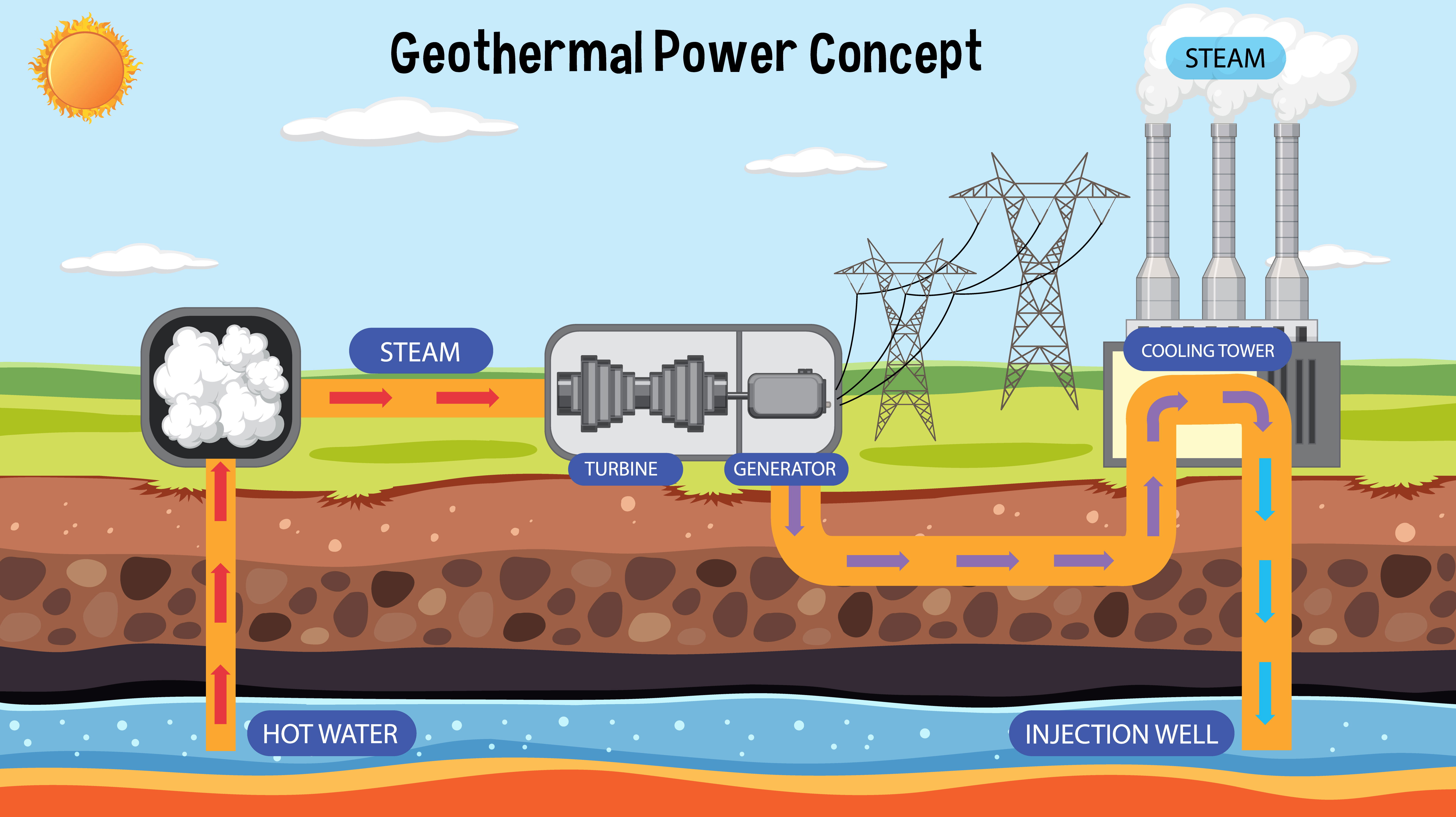Geothermal Energy: Home and Industrial Geothermal Solutions in 2025
Introduction
Geothermal energy, the heat from Earth's core, stands as a cornerstone of sustainable power in 2025, offering reliable, baseload renewable energy untethered to weather whims. Harnessing temperatures up to 6,000°C at the mantle, it generates electricity and provides heating/cooling for homes and industries, with global capacity reaching 15 GW—up 20% from 2024, per IRENA. Unlike solar or wind, geothermal operates 24/7, boasting 90% capacity factors, and could supply 8.3% of U.S. electricity by 2050, per NREL. In 2025, advancements like enhanced geothermal systems (EGS) and high-efficiency heat pumps make it viable for urban homes and heavy industry.
This article dissects residential solutions like ground-source heat pumps (GSHPs) that slash bills 50%, industrial EGS for scalable power, case studies from Iceland's IDDP to U.S. Fervo pilots, costs/incentives, and trends like AI optimization. As climate goals intensify, geothermal's low emissions (38 gCO₂/kWh vs. coal's 820) position it as a climate hero—let's drill down.
The Science of Geothermal Energy: Harnessing Earth's Heat
Geothermal energy taps the planet's internal heat, generated by radioactive decay and residual formation energy, with gradients of 25-30°C/km near the surface. Hot water or steam from reservoirs powers turbines, or shallow loops exchange heat for HVAC.
Types of Geothermal Systems
- Hydrothermal (Conventional): Naturally hot aquifers; 75% of current plants, like The Geysers in California (1.5 GW).
- Enhanced Geothermal Systems (EGS): Fractures hot dry rocks, injecting water to create reservoirs. Fervo Energy's 2025 Utah pilot hit 3.5 MW, proving commercial viability with 90% uptime.
- Super-Critical Geothermal: >374°C fluids for 10x efficiency; Iceland's IDDP-2 (2025) taps 450°C steam, yielding 50 MW from one well.
Heat pumps for homes use stable ground temps (10-15°C) for efficient transfer—COP (Coefficient of Performance) of 4-5 means 1 kWh of electricity yields 4-5 kWh of heat. 2025's leap: Closed-loop EGS with nanomaterials boosts permeability 200%, per Sandia Labs.
Home Geothermal Solutions: Efficient, Affordable Heating and Cooling
Residential geothermal, via GSHPs, leverages shallow loops (100-400 ft deep) for HVAC, cutting energy 40-60% vs. air-source systems.
Ground-Source Heat Pumps: The Home Hero
GSHPs circulate fluid through buried pipes, absorbing/rejecting heat to a compressor. WaterFurnace's 7 Series ($15,000 installed) hits COP 5.3, with 20-year warranties. 2025 Trends: Air-to-water hybrids for retrofits, like Carrier's Infinity system ($12,000), integrating solar for net-zero homes. Case Study: A Colorado family saved $1,200/year on bills post-2025 install, per DOE; payback in 5-7 years with IRA's 30% credit ($3,200 max).
Emerging Home Tech
- Directional Drilling: Less invasive loops, per Dandelion Energy's 2025 suburban pilots—$8,000 systems.
- Geothermal Mini-Splits: Bosch's ID21 ($4,000) for apartments, combined with mini-ducts.
Incentives: IRA's $2,000 tax credit + state rebates; 2025's 1.2 million U.S. installs, per EIA.

Industrial Geothermal Solutions: Scalable Power for Heavy Hitters
Industrial geothermal powers factories and data centers with baseload steam, with 2025's EGS unlocking 60,000 MW of potential, per DOE.
Enhanced Geothermal Systems: The Industrial Powerhouse
EGS fractures granite 5-10 km deep, injecting water for 200°C steam. Fervo's Project Red (2025) hit 400°C at 2.5 km, powering Google's Nevada data center with 3.5 MW—carbon-free 24/7. Sage Geosystems' 2025 A Texas pilot uses geomechanical storage, yielding 10 MW from one well. Case Study: Iceland's ON Power supplies Reykjavik's greenhouses with 200 MW, growing 40% of the nation's veggies; the 2025 expansion adds 50 MW for aluminum smelters.
Direct-Use Industrial Applications
- Food Processing: Steam for drying; New Zealand's 30 MW plants save $20M/year.
- Greenhouses: Dutch models use 100 MW for tomatoes, cutting energy by 70%.
- Desalination: California's 2025 hybrid plants co-generate power/water, per Carlsbad's 50 MGD output.
Costs: $4-6M/MW initial; LCOE $0.04/kWh, competitive with solar. 2025's $1B IRA funding accelerates.
Case Studies: Real-World Successes
- Residential: Vermont's 2025 GSHP boom—10,000 installs, per Efficiency Vermont, yielding 50% bill cuts and 1,500 jobs.
- Industrial: Kenya's Olkaria VI (140 MW, 2025 online) powers 70% of Nairobi, displacing $100M/year in diesel.
- Hybrid: Singapore's 2025 EGS-desal plant yields 100 MW + 200,000 m³/day of water.
Challenges and Solutions
Challenges: High upfront costs ($20-30M for EGS wells); solutions: IRA's $3B credits. Seismic risks? Monitoring mitigates, per Basel 2009 learnings. Water use? Closed-loop EGS recycles 95%.
2025 Trends and Future Outlook
Trends: AI optimizes reservoirs (Google DeepMind's 2025 model boosts output 20%); offshore geothermal for islands. By 2030, the International Energy Agency (IEA) projects that geothermal energy will reach 90 GW globally, accounting for 5% of total energy production.
Conclusion
Geothermal in 2025—from home heat pumps to industrial EGS—powers sustainable futures. From Fervo's Google tie to Iceland's steam farms, it's reliable green energy. As IRENA says, "Tap the heat below"—your energy revolution starts underground.